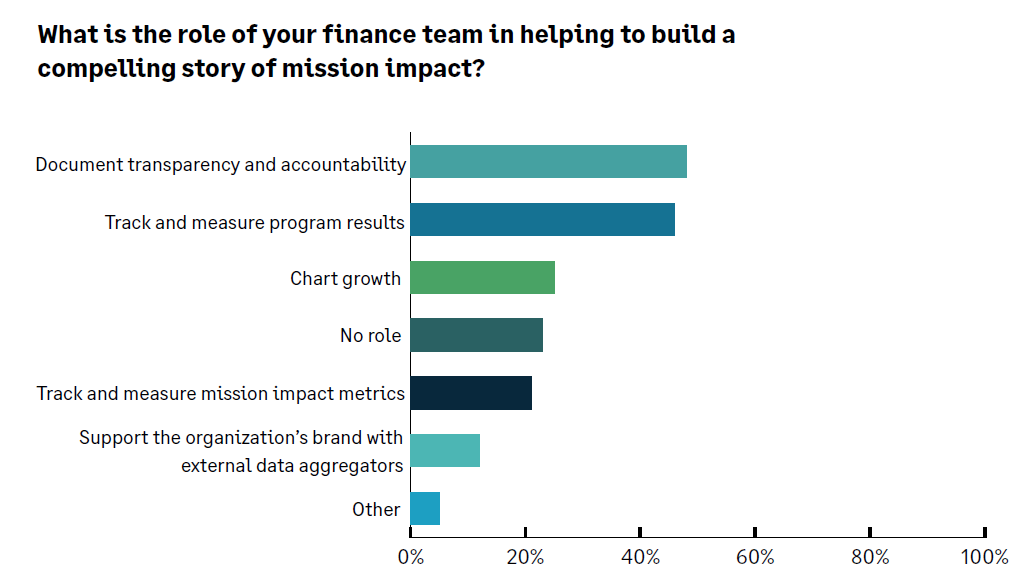Accountants
Going beyond GAAP reporting with nonprofit outcome metrics

GAAP-compliant financial reports help demonstrate your organization’s financial health, but they do not really tell the whole story about your nonprofit mission. How can you better capture the impact of your nonprofit’s great work and show it to funders and the community?
Leading nonprofits use outcome metrics to clearly validate, quantify, and report on program activities and to demonstrate mission success to donors and stakeholders.

In this article, we will define what outcome metrics are and why they matter. We will explore how having a cloud financial management solution with good integration capabilities helps nonprofits demonstrate their outcomes more easily. Outcome metrics vary greatly because they measure unique aspects of each organization; however, we will provide two outcome metrics every nonprofit should track.
“Measuring outcomes is not just about attracting resources to your nonprofit; it’s about the mission. Your nonprofit will only know that it is indeed helping individuals, solving problems in communities, protecting the environment, etc., if it is evaluating its performance.”
National Council of Nonprofits
What are outcome metrics?
The Compassion Capital Fund, administered by the U.S. Department of Health and Human Services, defines an outcome as “the changes in the lives of individuals, families, organizations, or the community as a result of the program.”1
An outcome metric is an easy-to-understand performance indicator measuring the impacts and results of nonprofit programs and activities. Outcome metrics help you determine if your organization’s actions achieve the intended results. Below are examples of nonprofit outcome metrics.
- Reading levels achieved – Investment per reading level achieved
- Meals served – Cost per meal served
- Clean water wells – Clean water recipients per dollars spent
- Patients seen – Cost per patient seen per practice area
Why measure outcomes?
There are many ways nonprofits benefit by utilizing outcome metrics:
- Measure effectiveness: Outcome metrics help nonprofit leaders decide which programs to continue, which to shut down, and where to invest more resources.
- Identify areas for improvement: Are some teams performing better than others? Are programs working well in one community but lagging in another? Outcome metrics can highlight where extra efficiency or better management can make a better impact.
- Provide accountability: Funders are increasingly tying support to accountability, transparency, and compliance with performance objectives. These objectives usually cover both financial performance and outcomes.
- Win (or unlock) additional funding: The ability to define, measure, monitor, and report your success metrics can absolutely make the difference between winning a new grant or not. It can also help you ensure you have hit key milestones that unlock subsequent rounds of multi-year grants.
- Demonstrate stewardship: The ability to define, track, and report outcome measures help ensure good stewardship inside your organization and boosts donor confidence. Outcome metrics provide real-time success measurements to keep all departments on the same page, from development to operations to programming.
The 2022 Nonprofit Technology Trends Report revealed government funding was the most significant increase in nonprofit funding over the past year. Government funding has grown exponentially over the past two years, while foundation funding has remained steady. Being able to measure, track, and report on program outcomes and mission impact is critical for earning government and foundation grant renewals.
The finance team has a growing role in helping nonprofits tell their story and earn new funding. Of the nonprofit finance leaders surveyed, 77% said the finance team is involved in telling their organization’s impact story, up from 64% in 2020.

2022 Nonprofit Technology Trends Report

Nonprofits need to measure both short- and long-term outcomes
Outcome metrics have traditionally focused on short- to medium-term outcomes necessary to demonstrate compliance with grant funding requirements. Over the past several years, the nonprofit industry, led by the world’s largest foundations and government agencies, has been seeking to transform a broken system of nonprofit funding and move the focus to more long-term outcomes to strengthen mission impact.
To frame an example of short-term compliance-oriented outcomes versus long-term mission impact outcomes, consider the work of an organization performing outreach to the homeless. Short-term outcomes funders care about include beds filled, medical services performed, and meals served. But there are also longer-term outcomes, such as how many people moved on to transitional or permanent housing, how many were able to find employment, and how many completed addiction and mental health counseling. Many nonprofits are working to ensure they can track and measure both types of outcomes to achieve bigger, more meaningful goals and secure long-term partnerships with funders.
Outcome metrics every nonprofit should track
Nonprofits should track and report on the outcome metrics that best reflect the impact their mission makes. Since nonprofit sectors target everything from arts to environment to social services, it makes sense each unique organization and program would need to track different outcomes. That said, these two outcome metrics are useful for every organization:
1. Program efficiency
This metric shows how funds are used. Are you spending too much on overhead? Or putting every penny toward progress. Program efficiency is the metric most board members, charity evaluators, and donors want to see.
Program efficiency = Total Program Services Expenses ÷ Total Expenses
2. Fundraising efficiency
This metric shows exactly what your organization spends to raise a dollar of funding.
Fundraising efficiency = Unrestricted Fundraising Expenses ÷ Total Unrestricted Contributions Raised
Here is a bonus—this outcome metric is commonly used by membership associations:
3. Revenue per member
If you operate a membership-based organization, your memberships should be generating dues and program fees.
Revenue per Member = Member Revenue ÷ Member Count
How to leverage outcome metrics anytime, anywhere
Cloud-based financial management puts real-time outcome metrics at your fingertips. Sage Intacct utilizes a dimensional database structure so organizations can track all the unique data your organization needs while keeping a manageable, clean chart of accounts. Build reports and dashboards incorporating statistical data from financial operations and outcomes to demonstrate accountability, stewardship, and compliance.
Focus on outcomes to make a bigger impact
True nonprofit impact is measured by outcomes, not dollars. By lives changed and missions accomplished. The finance team needs to stay on top of financial reporting for both compliance and stewardship purposes. To fully tell your nonprofit story, leaders need to be able to show funders the human side of the data by marrying financial metrics and outcome metrics for a more complete picture of mission impact.
Fortunately, modern cloud financial management systems make it easier than ever before to quickly and accurately demonstrate your organization’s mission impact using both financial performance and outcomes metrics. To learn more about how to elevate your organization’s use of outcome metrics, download the Outcome Metrics—Measuring What Matters in the Nonprofit World e-book.
1. U.S. Department of Health and Human Services, “Strengthening Nonprofits: Measuring Outcomes,” Judy Clegg and Dawn Smart, 2010.






Ask the author a question or share your advice